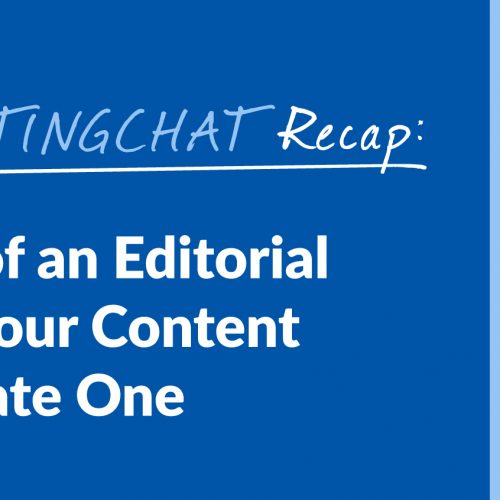Content Hacking: The Future of Content Marketing
If you’ve spent any amount of time on the internet, you’ve probably heard terms like “hack” and “hacking.” In the blog-o-sphere, these terms have been used to mean “clever solutions to tricky problems” or “tricks to make your life easier.” If you Google “hacks,” you can see this clearly – the results are all about clever, interesting, or creative solutions to life’s dilemmas. Hacking is typically a good thing. Now, what about hacking for marketing? Scary and bad – or good and effective? The term ‘hacking’ was used in the marketing industry in 2010, when Sean Ellis, co-author of Hacking Growth and CEO of GrowthHackers, coined the term growth hacking in his blog, Find a Growth Hacker for Your Startup. Ellis says: “A growth hacker is a person whose true north is growth. Everything they do is scrutinized by its potential impact on scalable growth.” With content hacking, the definition is just this – hands-on creativity and can-do, growth-focused attitude – but applied to content creation. True content hacking is about getting tough, heavy content marketing tasks done in a smart way. Making life easier. Getting to the rewards faster, without sacrificing quality or principles along the way. When applied to content, content hacking is about making your content marketing better, using BETTER, smarter methods. Growth-focused methods. Join me on an adventure where we dive into the traits, skillsets and brain of a modern-day content hacker. You might relate to a large percentage of these traits yourself. (Let me know in the comments if you do.) Ready? The Content Hacker: Origins of Content Hacking Full disclosure: I didn’t come up with the term “content hacker” itself. The hat-tip for that goes to Garrett Moon of CoSchedule. He coined the phrase by smashing together the concepts of growth hacking and content marketing. As we already mentioned above, growth hacking is a term Sean Ellis, the CEO of GrowthHackers, originated. It’s the process of driving breakout business growth using “a high-velocity testing/learning process.” It’s about being quick, agile, and nimble on your feet. If a process doesn’t work, you need to be able to pivot, adapt, and try something else. At the end of the day, sustainable growth is the bottom line, not quick fixes. You have to learn what works and what doesn’t — fast. As for content marketing, we all know and love it. Content marketing is the process of creating useful content that builds trust and turns traffic into leads and customers. Thus, growth hacking + content marketing = content hacker (noun): a growth-focused content marketer. (No, that doesn’t mean cheap or overnight fast-track tricks.) Content hackers climb over roadblocks to reach our goals on the content marketing horizon. They don’t add to the noise. They create beauty online. A real brand reputation that relies on content that works. If you’re on-board for all of the above, then congratulations: You’re a content hacker, too. [bctt tweet=”Growth hacking + content marketing = content hacker (noun): a growth-focused content marketer. Learn more about a #contenthacker” username=”ExpWriters”] [bctt tweet=”The term content hacker takes inspiration from the original creator of ‘growth hacking’, @SeanEllis. #contenthacking ” username=”ExpWriters”] [bctt tweet=”‘A growth hacker is a person whose true north is growth. Everything they do is scrutinized by its potential impact on scalable growth.’ – @SeanEllis #contenthacking ” username=”ExpWriters”] [bctt tweet=”Content hackers climb over roadblocks to reach our goals on the content marketing horizon. This is white-hat hacking or growth hacking for content. @JuliaEMcCoy” username=”ExpWriters”] [bctt tweet=”True ‘content hacking’ is about getting tough, heavy content marketing tasks done in a smart way. @JuliaEMcCoy #contenthacking ” username=”ExpWriters”] What a Content Hacker is NOT Let’s be clear: Content hacking is NOT about “overnight success” or “scary-quick results.” It’s NOT about fast fixes or putting band-aids on content marketing problems. Instead, a content hacker is laser-focused on growth – any kind of growth, whether that means converting three new leads to customers, getting 100 more people to visit your blog, or earning 1,000 new email subscribers. No matter how small, growth is something you can build on. Growth is something you can leverage. As long as it’s consistent and sustainable… As long as the process to get there is repeatable… As long as the content serves the user’s wants/needs/pain points, that’s the kind of growth a content hacker is all about. [bctt tweet=”Content hacking is NOT about fast fixes or putting band-aids on content marketing problems. More about a growth-driven #contentmarketer ” username=”ExpWriters”] Why Does Content Hacking Matter Now and in The Future of Content Marketing? In 2019, content by itself won’t do much. I hate to break it to you. There’s too much noise out there on the web. You won’t stand out unless you approach content in a radically different way. Nearly 4 million blog posts are written every day. That means, in a single year, over 1.46 billion individual posts are published. The internet is bursting at the seams with content. Even worse, much of it is useless. Worse than that? Most of the content that IS useful is same-old, same-old. (How many times have you seen this headline: ‘# Ways to Start a Blog’?) So, we’re left looking at a big, stinking pile of crap content. Let’s call it “Crap Content Mountain.” If this scenario makes you feel bleak, here’s a ray of light. Crappy, same-old, ugly content is exactly what a content hacker rails against. Content hackers don’t create useless content. They don’t create content because it’s the “thing to do.” Instead, they are always locked-in on their audience and hell-bent on producing content that those people will gobble up. They’re constantly researching their audience, researching topics and keywords, testing new ideas, updating their knowledge, and trying new content marketing tactics. Content hackers are the future of content marketing because, in the end, they are the ones working to make the internet better. Content hackers STOP producing more crap to add to the content trash pile. We’re on a mission to create content that matters to users, and builds trust and connections … Read more


